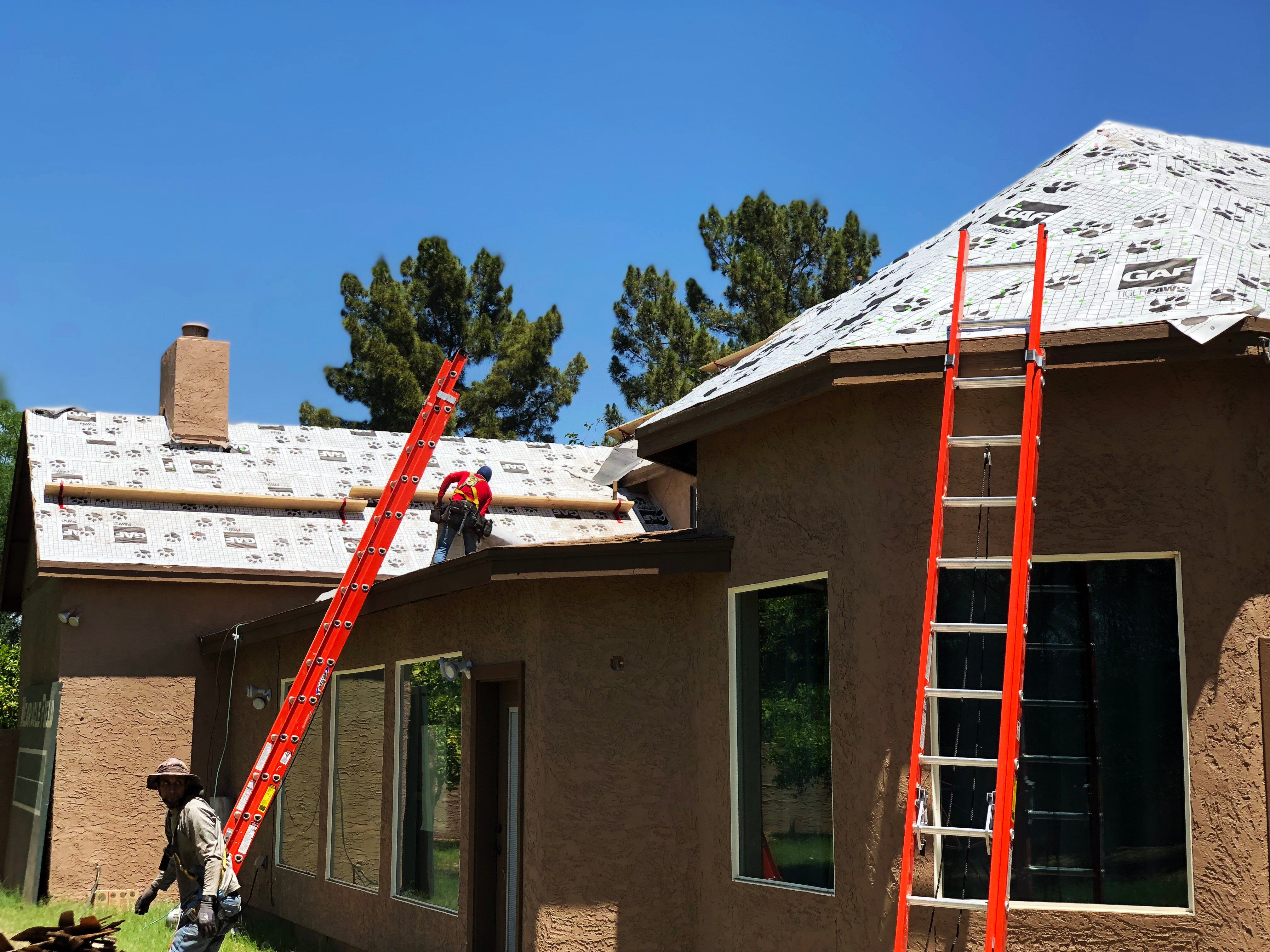Roof Underlayment 101: What It Is & Why It’s Important
Home / Azul Blog / Roof Underlayment 101: What It Is & Why It’s Important When most homeowners think about their roof, they picture the tiles, shingles, or foam that cover the top...
Flat roofs are a fairly common roof type here in Arizona. They complement the beautiful mid-century architectural styles that can be seen around neighborhoods. Although they aren't as common as sloped roofs, flat roofs are still prevalent enough to make up a good percentage of the roofs we see. From leaks to proper care and maintenance, flat roofs come with their own set of unique requirements, and challenges.
In our years of experience, there are a couple of top questions customers commonly ask us when it comes to their flat roofs. So if you have a flat roof, or are looking to purchase a home with one, please read on and explore these frequently asked questions we hear about Arizona flat roofs.
With roofs - and especially flat roofs - it can be hard to determine what kind of specific roof you have since visibility is limited. In general, there are three common types of flat roofs.
As one of the most energy-efficient roofing options, foam roofs are fairly common in Arizona where keeping as much cool air inside the home is key to avoiding costly electricity bills. The foam roofing system consists of a one-inch thick closed-cell polyurethane spray foam followed by a special UV reflective layer that guards against Arizona’s harsh climate and extends the polyurethane’s lifespan.
Made with a material that allows for easy expansion and contraction, the modified bitumen roof is today's version of the old build-up roof system (BUR). This type of roof isn't as energy-efficient, so it's more common to find it on patios or sheds. A properly applied Modified Bitumen roof system can last more than 30 years with minimal maintenance.
Fluid-applied roofing systems can be applied to almost any roof as a great restoration and strengthening option. Roofs that are still functioning can be upgraded with a fluid roof option to be a long-lasting, highly efficient weatherproofing system for a fraction of the cost of a full roof replacement.
This is the most common anxiety homeowners with a flat roof have. Contrary to what it might sound like, flat roofs do have a slight pitch to them. While largely unnoticeable, this pitch helps prevent water from pooling. However, because the slope is dramatically less extreme than a typical pitched roof, flat roofs must be monitored frequently to ensure the roof coating has no cracks or damage that could allow pooled water to flow inside. For this reason, flat roofs are thought to be leakier than other types of roofs. While this isn't all that untrue, it's very easy to avoid a leaky flat roof with proper care and maintenance.
Most leaks occur due to a few reasons - they can either be there from the beginning due to poor construction quality (sadly, we see this a lot), or they can pop up over time from neglect. The easiest way to avoid this issue no matter what the root cause of it was is to schedule free roof evaluations about every 2 years to ensure your flat roof is in good shape.
As briefly mentioned above, flat roofs have a slight pitch that helps to facilitate water shedding. There are a few types of drainage systems a flat roof can have.
This is the most common type of drain flat roofs employ. They work the same way as they do on sloped roofs by catching water and routing it down a spout that carries it away from your home's foundation.
These are large square openings around the perimeter of the flat roof, typically closest to the outer walls and/or curbing. With scuppers, the water flows down the side of the building or home. Spouts can be installed to catch the water and divert it away from the home.
While these are more common on larger commercial buildings, they can also be used for homes too. This type of drain is similar to a sink or shower drain and is typically placed in the center of the roof. The interior pipes collect the water and disperse it away from your home's foundation.
If you have a fluid-applied roof or a foam roof, recoating it is critical to proper care and maintenance. A good rule of thumb is to get a fresh coating every 7-10 years. This will vary based on the current state of your flat roof along with its exposure to the elements. During a free roof inspection, a qualified roofer will be able to advise you whether or not it's time for you to recoat your roof.
If you'd like a free inspection for your flat roof contact us today! Our qualified roofing team will be able to assess your roof and recommend any necessary repairs or maintenance.

Home / Azul Blog / Roof Underlayment 101: What It Is & Why It’s Important When most homeowners think about their roof, they picture the tiles, shingles, or foam that cover the top...